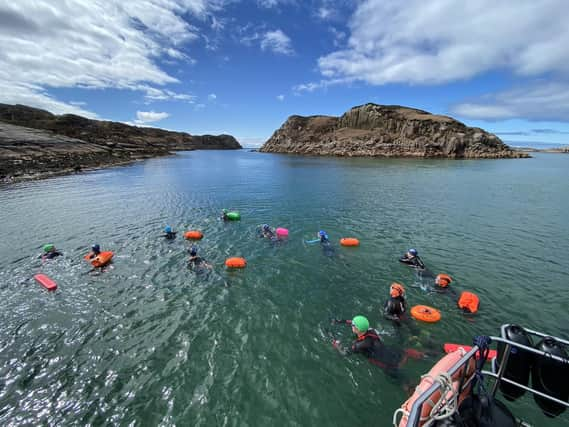Signage initiative to help make island waters safer


Norma Macleod of Immerse Hebrides said she is talking to the RNLI and Surf Lewis and Harris about what can be done. “We are going to put our heads together over the winter. A leaflet is one possibility but signage would be seen by a lot more people, particularly tourists”.
Warnings about the dangers of wild swimming and surfing have intensified after two weekend incidents which, according to the Coastguard Service, could have resulted in three fatalities.
They warned: “The seas and beaches in the Outer Hebrides are pristine and they look amazing - but they can hide currents that can overcome even the strongest swimmer and the very remoteness that makes the Islands so beautiful means rescue may be further away than elsewhere in the UK.
“Minutes really do count when someone is in trouble in the water. There could have been three fatalities on Sunday but for the combination of luck and swift action by others”
Immerse Hebrides posted on Monday: “Two call-outs yesterday with good outcomes. Thank goodness for our local rescue services but don’t rely on them alone - get educated and if in doubt just don’t go out, or go out with an experienced guide”
They are currently offering introductory sessions in basic open water techniques along with an understanding of various popular locations in the islands.
The incidents which threatened lives at the weekend took place on the west side of Lewis. Ms Macleod said: “Last week I had a couple of swimmers book in for a few swims and they were told by their neighbour that Dalbeg was a good place to swim.
“Anyone who lives here knows that both Dalmore and Dalbeg should be off limits for those swimmers who cannot tell where a rip is or get out of one. They are known surf beaches and surf beaches usually equal rips. Westerly facing beaches are only good for surfing.”
The Immerse Hebrides Facebook page provides a list of 13 Lewis beaches with brief descriptions and warnings about what they are and are not suitable for. Dalbeg, for example, should be “avoided for swimming unless very experience in local water” while Dalmore “can catch you out with some of the bigger waves pushing further than you expect”.
As for small offshore islands, the site warns: “Visitors please don’t go swimming to the smaller islands without tow-floats, kayak/sup safety or someone local (and experienced) to guide you. The islands always look closer than they are… and then you have to swim back too with or against a tide”
The question also arises of whether the local authority should be taking the lead in providing signage throughout the islands to warn of potential hazards which may be known locally but not to visitors.
A report for the Marine and Coastguard Agency in 2019 said: “The legal responsibility for safety at the foreshore is unclear with a lacuna in legal responsibility which leaves Councils acting out of largely moral and social responsibility rather than legal obligation”.
Meanwhile, it’s emerged that a comhairle initiative produced an award-winning idea to address safety risks – but couldn’t proceed due to lack of funding.
In 2020, the Outer Hebrides Community Safety Partnership created SMART signs in which signage was linked to phone technology and strategically placed at 62 confirmed danger spots.
Each SMART sign would carry its own location number and feature a “QR” code, linking the user directly to the British Red Cross emergency advice App.
A council spokesman said the idea “received national recognition” but added: “Although seen as a highly innovative approach, it did not have an obvious source of funding and did not progress further after the Community Safety Partnership ceased to operate. Signs were erected on Barra and Eriskay and the initiative still features on the comhairle website.
“Our community safety officers believe that the formation of a local Water Safety Reference Group and independent funding source would see this safety intervention reach its full potential and provide a uniform template for the whole of the UK to adopt”.
He said that “people automatically assume it to be the Comhairle’s responsibility" but that “also lies with the landowner or Crown Estate”.
“It can be a contentious issue given there is no Government direction. A further consideration is the costs of the signage and safety fencing and who takes responsibility once installed”.
The Comhairle identified 62 locations where they could place SMART signage in places of highest risk. They also established that 86 per cent of people requiring assistance were tourists.